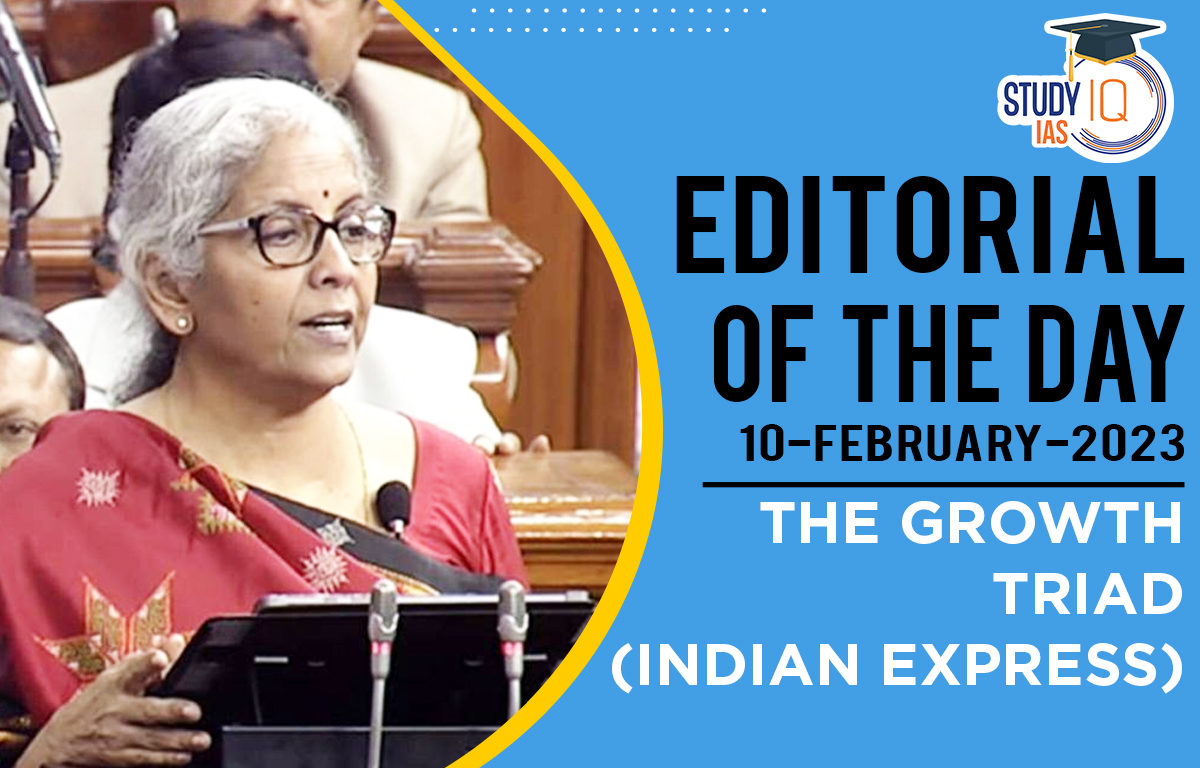Table of Contents
The article talks about the importance of infrastructure (physical, social and digital)that has been driving India’s development since 2014. Even though infrastructure is usually associated with physical assets such as roads, ports, power transmission lines, etc, India has been able to diversify its assets.
Budget 2023 gives a powerful thrust to these three dimensions of infrastructure development which together can accelerate inclusive growth.
Physical Infrastructure Creation in India
- Budgetary allocation: In Budget 2023-24, about 3.3 per cent of the GDP was allocated for infrastructure.
- The Ministry of Railways was allocated funds nine times the allocation in 2013-14.
- The Ministry of Road Transport and Highways saw a 36 per cent growth in its budget.
- Interest-free loan extension: States have been provided one-year extension on the 50-year interest-free loan to state governments to encourage infrastructure investment and incentivise complementary policy actions.
- Rural assets creation: A 66 per cent rise in allocation to the PM Awas Yojana will not only provide housing but also create jobs in rural parts of the country.
- This will help in decentralised infrastructure development in urban and peri-urban areas across regions.
- Benefits: These targeted investments will not only create vital physical infrastructure and improve connectivity but also generate jobs, boost private investments, and provide a cushion against global headwinds.
Digital Infrastructure Creation in India
- The first phase of digital transformation in the country was led by the JAM trinity (Jan Dhan, Aadhaar and mobile linkages) and the Digital India programme.
- This benefitted the country by increasing the penetration of government schemes and efficient financial inclusion.
- Low-cost accessibility (Aadhaar), citizen-centric services (UPI), large-scale adoption and reach (DigiLocker, MyGov), and vaccine initiatives (CoWin) are all significant and successful milestones.
- The second phase of digital transformation in the country is led by the development, application, and expansion of cutting-edge technologies such as 5G, Internet of Things (IoT), artificial intelligence (AI), quantum computing, mechatronics, robotics, etc.
- The government is increasingly focusing on AI resources, to leverage its usage in breaking down language barriers in culturally diverse country such as India.
Examples of Digital Infrastructure Initiatives
Digital India Bhashini
- The Digital India Bhashini portal is a public digital platform that contains 260 open-source API-based AI models for speech-to-text conversion, machine translation, and text-to-speech conversion in 11 Indian languages and English.
- Bhashini can provide Indians with access to the internet and other digital resources in their native languages.
- This tool will help break linguistic barriers that limit technology access and provide the benefits of Natural Language Processing to MSMEs and individual innovators in the interior parts of the country.
The Agriculture Accelerator Fund
- The Agriculture Accelerator Fund (announced in the budget) will help the Indian agricultural ecosystem (startups, businesses, and farmers) to work collaboratively and find knowledge-based and farmer-centric solutions.
Social Infrastructure Creation in India
- Investment in social infrastructure (education, skill development, public health and nutrition, drinking water and sanitation) can lead to a productive and proficient workforce, reduce mortality, nutritional deficiency, increase social mobility and a higher quality of life.
- All these factors help in creating a stronger and more inclusive economy and holistic development.
- Initiatives towards social infrastructure creation:
- The total expenditure of the central government in social infrastructure has grown by 134 per cent between 2016 and 2023.
- The Aspirational Districts Programme (initiated by NITI Aayog) has resulted in consistent macro improvements in key socioeconomic indicators at the district level.
- The SVAMITVA Scheme of the Ministry of Panchayati Raj, which has laid emphasis on digital land records, has led to structural reform in rural land management.
- The mission to eliminate sickle cell anaemia will raise awareness about the disease and will immensely benefit the affected tribal areas.
- The expansion of Non-Communicable Diseases clinics and the PM National Dialysis Programme will help identify emerging public health challenges and address them.
Conclusion
- Thrust given to the creation, maintenance and expansion of physical, digital and social infrastructure has emerged as a key focus of India’s unique development model.
- This infrastructure triad will be the enabler of growth and leveller of opportunities as we look to achieve “Viksit Bharat” by 2047.


 Daily Quiz 05 July 2025
Daily Quiz 05 July 2025
 SSC MTS Apply Online for 1075 Posts – ...
SSC MTS Apply Online for 1075 Posts – ...
 Dynamic Pricing: What It Is and Why It's...
Dynamic Pricing: What It Is and Why It's...





















